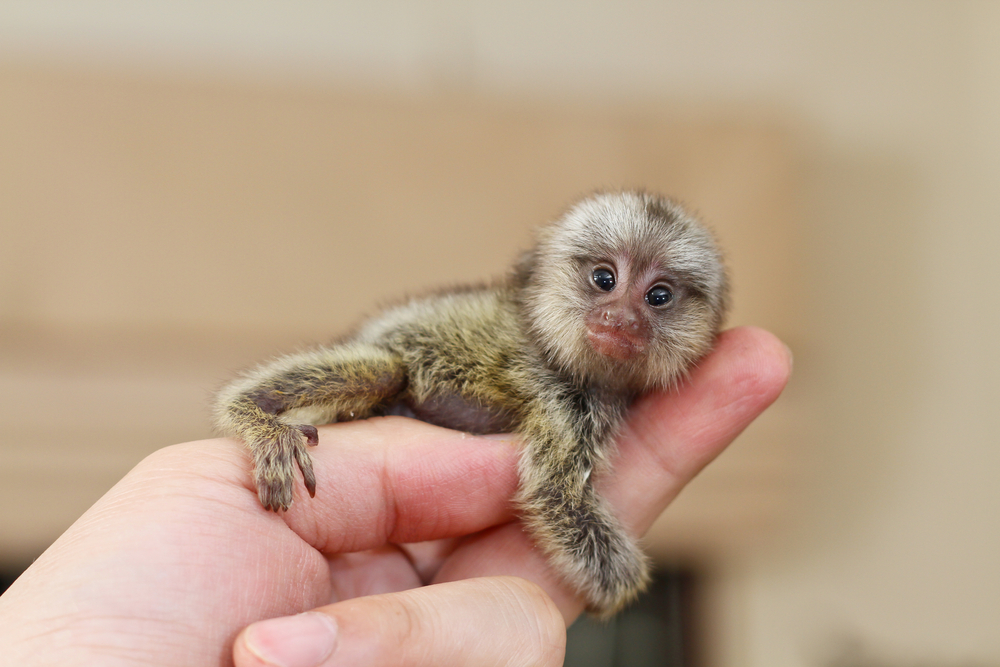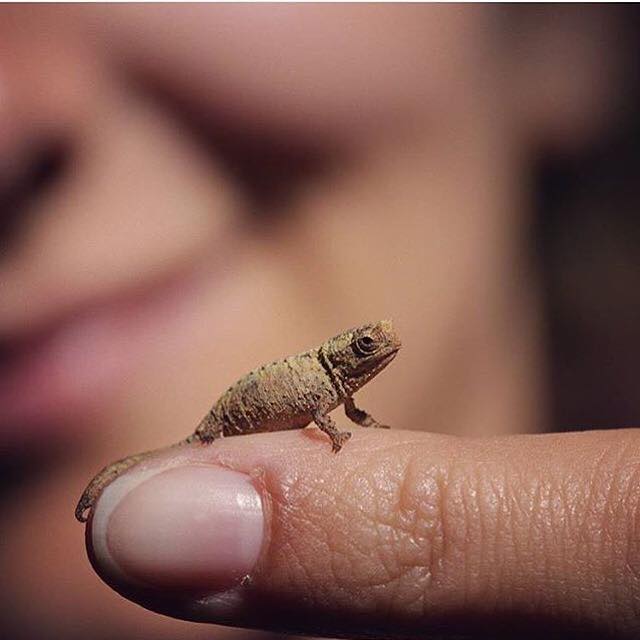From the incredibly small to the breathtakingly large, animals come in various forms and sizes. And if you are an animal lover, you would adore all of them, large and tiny, from the powerful elephant to the smallest animal in the world.
While it’s common for us to believe that bigger is better, this isn’t always the case for wildlife. Due to your small size, you require limited resources to survive and can hide in a wide range of places to avoid predators or hibernate.
Scientists frequently find new plants or animals every year because of the large number of flora and fauna on earth. Some of these creatures stand out from others because of their size or inability to be seen by the human eye.
In this blog, we’ve compiled more than 15 of the tiniest animals in the world. These animals are known for their tiny bodies and way of life. While some of them are endangered, others have been discovered recently. So if you are wondering what is the smallest animal on earth, dive in!
1. Etruscan Shrew

The smallest animal known for its size is the Etruscan Shrew. Their primary traits are their extremely quick movements and extremely quick eating.
Here is a comparison of the size of Etruscan shrews (Suncus etruscus) and Elephants:
| Etruscan Shrew | Elephant | |
|---|---|---|
| Average body length cm/kg | 3-4 cm | 8 to 13 feet |
| Average weight g/kg | 2-4 gm | 6,350 kg |
As you can see, elephants are much larger in size than Etruscan shrews in terms of length and weight. They are also much heavier, as their weight is measured in kilograms or tons rather than grams.
Additionally, it consumes 1.5 to 2 times its body weight in food each day. They have short hind limbs and a skull that is noticeably larger than the rest of their body.
They have big ears. On its tummy, the fur turns light-grey from pale towards the torso. It has short whiskers that it will use to hunt for prey at night that is located close to its mouth.
These little creatures can be found all throughout Europe, North Africa, Malaysia, and the Maltese islands. They prefer settings that are warm and humid and have plants that they may rapidly hide beneath to avoid predators.
They frequently visit rocks, boulders, and ruins, darting in and out of them, and they build their nests in natural cracks and abandoned burrows. These creatures live alone.
Except while hiding or napping, they are continuously moving. They spend the daytime at their nest or hiding area because they are most active at night. They eat a variety of foods, including worms, larvae, lizards, rodents, etc.
| Scientific Name | Suncus etruscus |
| Length | 1-2 Inches |
| Weight | 1.3-2.5 grams |
| Animal type | Mammal |
| Family | Shrew |
| Lifespan | 2 years |
| Found in | Europe |
2. Madame Berthe’s Mouse Lemur

In this undated photograph released by Conservation International, Mireya Mayor holds a newly discovered mouse lemur that was named after Russell A. Mittermeier, a leading primatologist and longtime chairman of the Primate Specialist Group of the World Conservation Unions Species Survival Commission . The Microcebus Mittermeieri is a hamster-like primate with pointy ears and round auburn eyes and is one of three new mouse lemurs discovered in Madagascars tropical forest in recent years by researchers Mireya Mayor and Edward Louis and their Malagasy colleagues. (AP Photo/CI/ Mark Thiessen/National Geographic Society) ** NO SALES NO ARCHIVE ONE TIME USE ONLY MANDATORY CREDIT
The adorable Madame Berthe Mouse Lemur does resemble a mouse somewhat. These lemurs have two large ears, a brown head, and a body that is greyish-brown in color. To scare off their predators, they will keep an ear out for bird alarm cries and the calls of other lemurs.
According to National Geographic, the mouse lemur is the smallest primate in the world, even though Pygmy marmosets are the smallest species of monkeys. These nocturnal inhabitants of Madagascar can reach heights of 2.25 inches and weights of 1 to 4 ounces. However, their tails, which may reach a length of 4.75 inches, can be almost as long.
They are light grey with faint cinnamon and yellow coloration. The underfur is a subdued black and grey tint. They are truly unique and cannot be found anywhere else in the world. They are solitary beings that only move at night. They will rest in holes or tree nests during the day. They frequently groom one another or congregate for a short while.
| Scientific Name | Microcebus berthae |
| Length | 4.6 inches |
| Weight | 1-4 oz |
| Animal type | Mammal |
| Family | Cheirogaleidae |
| Lifespan | 6-8 years |
| Found in | Kirindy Forest in western Madagascar |
3. Speckled Padloper Tortoise

The tiniest tortoise in the world, the Speckled Padloper, cannot be kept as a pet because of its small size. They have a golden-beige tint and black dots on its shell.
The speckled cape or speckled tortoise are other names for it. They can only be found in the forests of Western South Africa, Namibia, and Namaqualand. Their typical sizes range between 6 and 10 cm (2.4 – 3.9 inches).
They are among the smallest creatures in the world and the smallest tortoise. They are herbivores and eat plants like endive and chicory for food. Unfortunately, their lives are at risk.
The fact that this particular species has five toes on its forefeet and its speckles set it unique from other tortoises in its genus. They hunt for food among the rocks while living on rocky outcrops. The rocks provide them with protection from the heat as well as from predators. They consume leaves, flowers, grasses, shrubs, succulents, and forbs because they are herbivores. They are highly territorial that are most active in the morning.
| Scientific Name | Homopus signatus |
| Length | 2-3 inches |
| Weight | 95 – 160 grams |
| Animal type | Reptile |
| Family | Tortoise |
| Lifespan | 20-40 years |
| Found in | South Africa |
4. Slender Blind Snakes

Did you know that worm snakes and thread snakes are also names for slender blind snakes? They appear to be extremely shiny and smooth. The body width of Slender Blinds Snakes is less than 0.2 inches. They appear to be moving strings or threads when you observe them in motion.
With a length of about 4.3 in (11 cm), Slender Blind Snakes or Thread Snakes are considered to be the tiniest snakes in the world. Slender Blind snakes come in 87 different species and can be found in North and South America, Africa, and Asia. They are non-venomous, blind snakes that live underground and eat termites and ants. The majority of species remove the insides of insect bodies and throw away the skin.
The adult can range in length from 4 to 10 inches and weighs no more than 0.05 ounces, or 1.4 grams. The only snakes with teeth on their lower jaw are slim blind snakes. On their upper jaw, they are toothless. They often only come in one color, such as light to dark brown, grey, or black. There are instances when you see striped ones like in South America. Although they can also be found in Africa and southwest Asia, these little snakes are native to Central, South, and North America. They may reside in rocks, the desert, the rainforest, or both.
They like to dig under the ground, hide beneath logs and stones, or inside termite mounds, thus they look for a little bit of damper environments wherever they are. They eat small invertebrates like insects and vertebrate animals without backbones like crickets, cockroaches, flies, caterpillars, and spiders, among others. Their cuisine also includes termites and ants.
| Scientific Name | Leptotyphlopidae |
| Length | 4 to 10 inches |
| Weight | 1.4 grams |
| Animal type | Reptile |
| Family | Snake |
| Lifespan | ± 2-8 years |
| Found in | North and South America, Africa, and Asia |
5. Bee Hummingbird

The smallest bird alive is this one. Even though it is little, it can fly extremely well, just like the other hummingbirds can. They consume spiders and insects.
You will have to travel all the way to Cuba to locate this tiny bird. Your best hope after arriving on the island would be to look in the vicinity of the forests, which have a lot of vines and bromeliads growing on the trees. You might possibly find the little Bee Hummingbird if you notice flowers.
You won’t find this tiny, lovely little bird anywhere else, not even in groups of other hummingbirds.
It is only a little over two inches long, after all. Because they are so tiny, people frequently mistake them for bumblebees! How insane is that! They also only weigh a very small amount—up to 2 grams.
When they are courting, the tiny little wings may beat up to 200 times per second, beating at an average rate of about 80 times each second. The male bird has a hot pink-red throat and head, and its breast is covered with fiery red feathers that tip down like spikes.
| Scientific Name | Mellisuga helenae |
| Length | 2.4 inches |
| Weight | 2.6 grams |
| Animal type | Mammal |
| Family | Hummingbirds |
| Lifespan | ± 7-10 years |
| Found in | Cuba |
6. The Pygmy Rabbit

The pygmy rabbit is the tiniest type of rabbit. Its nose is covered in tiny white dots, and its fur is grey. It weighs around a pound and won’t get much bigger than a person’s foot. It dwells in burrows or close to bush and dense grass. They enjoy having a lot of grass and, in particular, sagebrush, as their food, and they also like their food close to where they are.
Because sagebrush is being burned as farms expand, this small little bunny is becoming increasingly rare. In fact, this tiny rabbit is now a threatened species. Although they are active throughout the day as well, they are most active at dusk and right before sunrise. In case of danger, they take a nap close to their burrows in the afternoon. Fox, bobcats, badgers, coyotes, owls, etc. are among their primary predators.
| Scientific Name | Brachylagus Idahoensis |
| Length | 9-11 inches |
| Weight | 0.827 to 1.102 pounds |
| Animal type | Mammal |
| Family | Leporidae |
| Lifespan | 2-5 years |
| Found in | North America |
7. Baluchistan Pygmy Jerboa

Known also as the Baluchistan pygmy jerboa, the dwarf three-toed jerboa inhabits the arid deserts of Pakistan and Afghanistan. These critters, are the smallest rodents in the world and extremely adorable, despite appearing a little out of proportion. They typically have a size of 44 millimeters and have quite large hind legs. They survive by tunneling under little bushes to eat seeds and leaves. Although there are about 33 species of Jerboa, this one is by far the smallest. It is so little that it just weighs a single ounce.
Its hind legs are longer than its front legs, giving it the appearance of a tiny miniature kangaroo when it stands up. The size of their feet is out of proportion to the rest of their bodies. However, they jump with long hops and balance themselves at all times using their tails.
The Guinness Book of Records acknowledged this tiny mouse as the tiniest rodent in the world back in 1999. In addition to the succulent leaves of the vegetation that grows in deserts, they also eat wind-blown seeds.
They use their tiny little hands to bring the food to their mouths. These little rodents are opposed by others. They include the monitor lizards, sand cats, and leaf-nosed vipers that live in the same habitat as them.
They are unique in that they can jump in any direction, whether it is vertical, horizontal, or even zigzag. They are therefore challenging to capture. Water is not ingested by the Baluchistan Jerboa directly into its mouth. Instead, it obtains its water from the plants or from insects that it has consumed.
| Scientific Name | Salpingotulus michaelis |
| Length | 1.7 inches |
| Weight | 3.8 grams |
| Animal type | Mammal |
| Family | Dipodidae |
| Lifespan | ± 6 years |
| Found in | Pakistan and Afghanistan |
8. Pygmy Marmoset

It’s unlikely that you’ll see these tiny monkeys very often. They originate from deep within South America’s rainforests. They will jump, duck, and dive between the creepers and tree branches. They will then stop abruptly moving like a statue before taking off again like a small squirrel.
In fact, it resembles a squirrel in both the shape of its tail and the brown fur it has. These marmosets’ color serves as excellent camouflage against their predators.
The smallest monkeys in the entire animal kingdom are these tiny pygmy marmosets. Actually, you could argue that when it is completely grown, it will fit in an adult’s hand and won’t weigh much more than a stick of butter.
However, its tail is longer than its body, and it is the tail that aids in the monkey’s balance as it gallops and leaps from tree to tree.
In the trees are where they live. They also enjoy living in bamboo groves next to waterways. They enjoy blending in with the vegetation and gathering food from a select few of the nearby trees.
Due to their small size, they are prey for snakes, cats, and raptors like hawks and eagles. They hurry from one location to the next because of this.
Although they prefer to consume nectar and fruit, they will consume mealworms, crickets, hard-boiled eggs, and wax worms when kept in confinement, such as at a zoo.
| Scientific Name | Cebuella Pygmaea |
| Length | 4-6 inches |
| Weight | 100 grams |
| Animal type | Mammal |
| Family | Callitrichidae |
| Lifespan | 12 years |
| Found in | Western Amazon Basin in South America |
9. Kitti’s Hog-Nosed Bat

The Kitti’s hog-nosed bat, often known as the bumblebee bat, is the smallest mammal in the world and is roughly the same size as a bumblebee.
In addition to their little size, they are distinguishable by their reddish-brown coats and snouts that resemble pigs. In limestone caverns along rivers in Thailand and Myanmar, this endangered species can dwell in colonies of up to 100 individuals.
It will likely live in large colonies, such as a cave with more than 100 bats, where you can find it. Around 500 bats may occasionally be present. They will nest widely away from one another in lofty locations on the roof or walls. The bat has a lot of fur covering it and tiny eyes. It features a nose that resembles a small pig, large ears, and tiny nostrils.
The bat has a huge skin web between its back legs that is thought to help in flight and insect catching. However, it lacks tail bones that would help in controlling its flight.
Their huge, dark-colored wings are of considerable size. Most often found in Thailand and Burma, this tiny bat. They prefer to live in the limestone caverns that are close to the river, and they are most active in the dawn and evening.
They will only leave the roost for about 30 minutes in the evening and early in the morning during their brief activity period. They won’t venture outside or take to the air if it’s extremely cold or raining heavily.
| Scientific Name | Craseonycteris thonglongyai |
| Length | 1.1-1.3 inches |
| Weight | 2 grams |
| Animal type | Mammal |
| Family | Craseonycteridae |
| Lifespan | 5-10 years |
| Found in | Western Thailand and Southeast Burma |
10. Paedocypris fish

The Paedocypris is the smallest fish ever discovered by science, with an adult specimen measuring only 7.9 millimeters in length. found on the Indonesian islands of Borneo, Sumatra, and Bintan in wetlands and streams. The fish’s microscopic size prevents them from even having a full skull, which leaves some of their tiny brains without any bony protection.
In order to imply that these dwarfs sexually develop as larvae, the genus name “Paedocypris,” which roughly translates to “child carp,” was chosen since even fully adult Paedocypris have anatomical traits that are typically only seen in fish larvae.
The red mark on the male’s head acts as a blinking light to entice the females to the mating place, and the males that are actively mating are crystal red. The eggs are stuck to the underside of plant leaves as they spawn belly up.
After sporadic attempts in earlier years failed to deliver, you can now import these fascinating dwarfs in fair numbers and conditions. The catching technique is the secret to success. If at all possible, avoid exposing these little animals to the air. They are not fragile if you scoop them up and constantly leave them underwater.
| Scientific Name | Paedocypris progenetica |
| Length | 7.9-10.3 mm |
| Animal type | Tiny cyprinid fish |
| Family | Minnows and Carps |
| Lifespan | 6-8 years |
| Found in | Southeast Asian Islands of Borneo, Sumatra, and Bintan. |
11. Jaragua dwarf gecko

Williams’ dwarf gecko, often known as the turquoise dwarf gecko, is the smallest reptile on the earth. The unique color of this famous reptile is well known. The disappointment is that this species is endangered and that its population is dwindling quickly.
The lizard has only ever been spotted in Jaragua National Park in the Dominican Republic, likely because of its little size.
| Scientific Name | Lygodactylus williamsi |
| Length | 3 inches |
| Weight | 0.13g |
| Animal type | Reptile |
| Family | Gekkonidae |
| Lifespan | 5-10 years |
| Found in | Tanzania |
12. Denise’s pygmy seahorse

The smallest seahorse in the world, reaching a maximum length of about 24 millimeters, this uncommon species has remarkable hiding qualities. They are found in the western Pacific, from Indonesia to Micronesia, and are sometimes known as Denise’s pygmy seahorse or the yellow pygmy seahorse (not to be confused with the incredibly slow-moving dwarf seahorse).
| Scientific Name | Hippocampus denise |
| Length | 2.2 cm |
| Animal type | Seahorses |
| Family | Pipefishes-Seahorses |
| Lifespan | 1-5 Years |
| Found in | Western Pacific |
13. Brookesia Micra Chameleon

The Brookesia Micra is the smallest known chameleon, making it another native to Madagascar species on our list of the smallest animal in the world. The species was found in 2012, and the typical adult only reaches a height of 25 millimeters, which is only large enough to fit on top of a human finger.
The species sleeps in the tree branches at night after feeding during the day on leaf litter. They are also believed to be the world’s tiniest reptiles.
| Scientific Name | Brookesia micra |
| Length | 16 mm |
| Weight | 0.006 to 0.0074 of an ounce |
| Animal type | Reptiles |
| Family | Chameleons |
| Lifespan | 10 Years |
| Found in | North Madagascar |
14. Pink Fairy Armadillo

Central Argentina is home to the Pink Fairy Armadillo, often known as the “pichiciego,” a desert-adapted animal with a “pink” bone armor shell. It lives on dunes, grasslands covered with thorns, and sandy plains. Most of its time is spent underground.
It is the smallest species of armadillo in the world and utilizes its environment not only as a place to live but also as a place to hide from numerous hazards. They are one of the least understood and studied armadillo species since they are elusive and rarely observed by people.
| Scientific Name | Chlamyphorus truncatus |
| Length | 6 inches |
| Weight | 4.2 oz |
| Animal type | Mammal |
| Family | Chlamyphoridae |
| Lifespan | 5 to 10 years |
| Found in | Central Argentina |
15. Paedophryne Amauensis Frog

The Paedophryne amauensis frog, which measures just 7.7 millimeters in length, is the tiniest frog, amphibian, and vertebrate in the entire animal kingdom. These frogs were first found in New Guinea in 2009, but because they blend in with the leaf litter on tropical forest floors, they are quite hard to find in the wild.
| Scientific Name | Paedophryne amauensis |
| Length | 7.7 millimeters |
| Weight | 0.0003 ounces |
| Animal type | Amphibian |
| Family | Microhylid Frogs |
| Lifespan | About 1 Year |
| Found in | Papua New Guinea |
Hugues Beaufrere is the Exoticpetia’s senior writer and reptile expert. He has been fascinated by reptiles and monkeys since he was a kid and had years of experience in herpetology and primatology. He has cared for various kinds of Monkeys, Lizards and Reptiles and loves to share his knowledge and passion with others.


